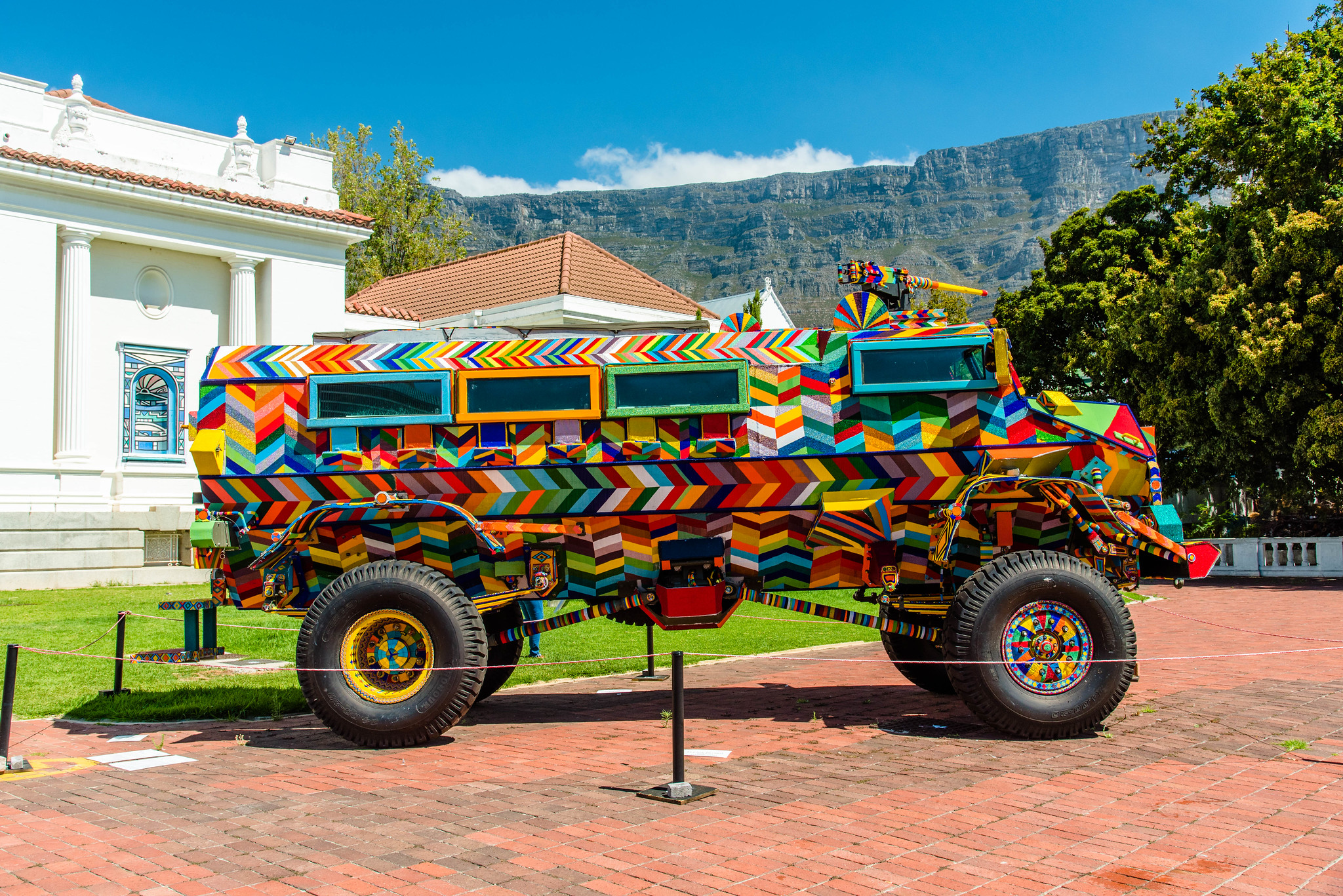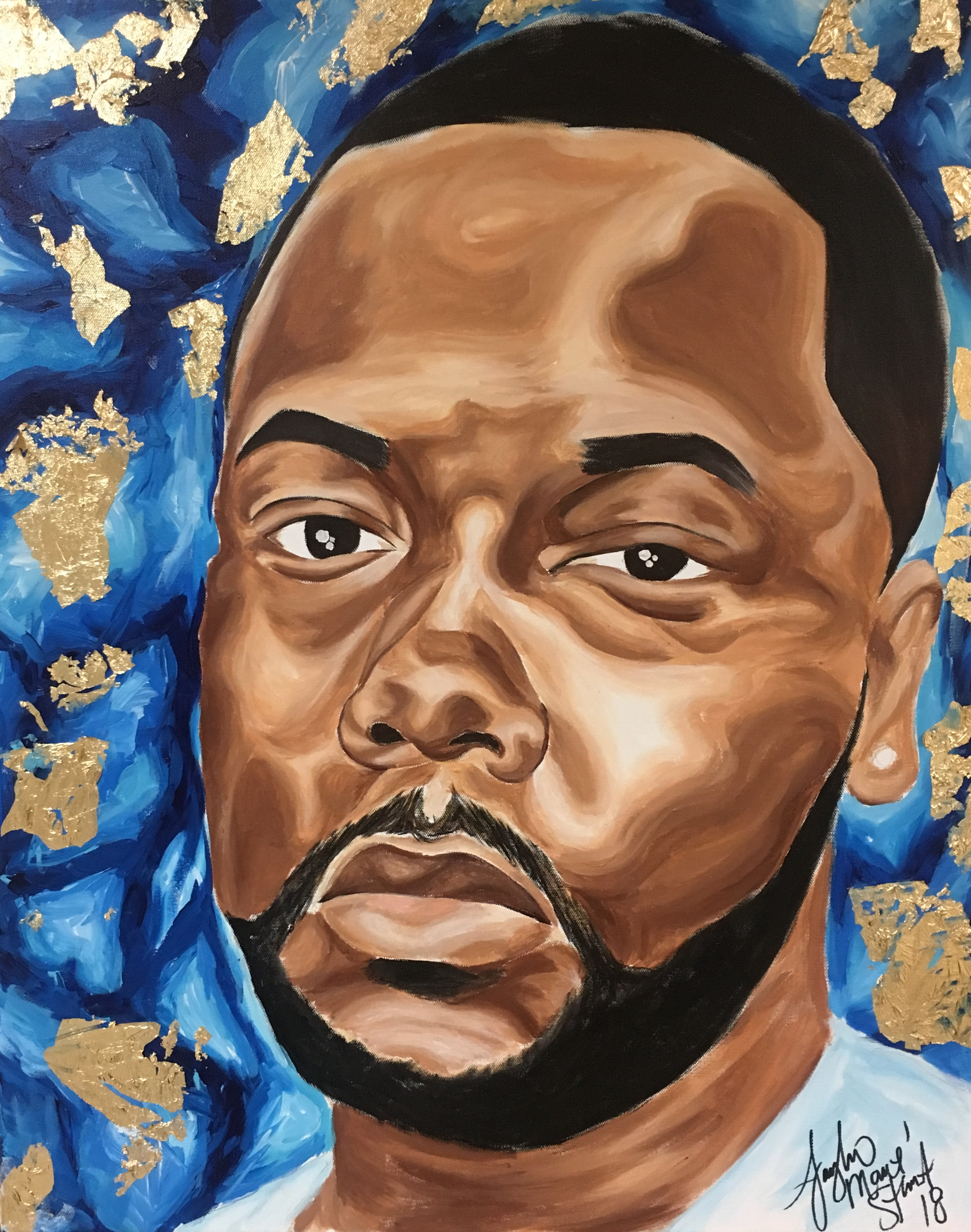

ABOVE: Ralph Ziman, SPOEK 1. Photo, ©Gerry Lynch.
︎ Ramona Dallum Lindsey, Louisville
Reckoning with our Collective History
Thoughts On
Ramona Dallum Lindsey
The Transatlantic Slave Trade fueled the global econonomy from the mid-15th century until the 1860s. For over 300 years, the trade of humans kidnapped from Africa provided legalized forced labor for the globe. Race became the key determinant for a life lived in forced servitude. The British Empire was a key player in the Transatlantic Slave Trade. America and South Africa were British colonies with a shared historical narrative of systematic white supremacy, racial oppression and violent suppression necessary to enforce the desires of the British monarchy. Today, these independent nations still grapple with the ramifications of legalized slavery and racial oppression.
From the past into the present, military style weapons were used by both nations to suppress human rights and dignity. During the 1980’s, military tanks known as Casspirs controlled crowds during South African anti-apartheid demonstrations. In America decades earlier, soldiers armed with military issued rifles confronted Black American citizens demanding their civil rights.
Trauma is a reality for everyone connected to a national system of racial oppression. How do the oppressed and oppressor work collectively to process and heal our trauma? What is the role of the established art community to support those grappling with a collective history of racial oppression?
I started asking myself these questions after reading an ArtNet News article about a vibrantly decorated South African military vehicle exhibited during December 2019’s Miami Art Week. Ralph Ziman, a white South African artist, created SPOEK 1. The brightly beaded vehicle was the same fully functional Casspir used in the 1980’s anti-apartheid demonstrations. Ziman spent his formative years in a predominantly black nation with white men as the primary legal authority. The Casspir violently maintained that authority.
Ziman’s inspiration for the embellished Casspir came after seeing it used in 2014 to suppress Black American protesters in Ferguson, Missouri after the police shot and killed Michael Brown, an unarmed Black teenager. After the end of Apartheid in 1994, Casspirs were no longer needed by South African authorities. They were imported by the US military and ultimately gifted to local American police forces to assist in putting down urban protesters. The Ferguson police force received one of these gifts.
Ziman’s beautified Casspir was an extension of a previous work where he hired Zimbabwean and South African traditional bead artisans to encase military assault rifles in vibrant colored beads using patterns native to their culture. Many of these weapons were imported to the African continent from American gun manufacturers. The beautifully beaded assault rifles and Casspir tank worked together to provoke conversations around the transactional nature of violent suppression.
Through the work of artisans, Ziman transformed these violent tools of fear and suppression into something he saw as “bold and beautiful,” to initiate dialogue on global politics and human rights. He redefined the Casspir for himself. Ziman explained in an interview, “I wanted to Africanize the Casspir, to own it. By transforming it from a military vehicle to an art piece, I am telling a story of its past, present and future, showing the Casspir in a new light.” From Ziman’s perspective the Casspir was no longer a weapon, but a symbol of peace; however, it remained fully functional.
I suspect the Black artisans working on Ziman’s project recognized a weapon masquerading as art. I began to wonder about Louisville-based artist, Jaylin Stewart. How would she have viewed the beautifully beaded military guns? Stewart lives in a marginalized neighborhood with easy access to violent weapons. With this access comes gun violence. I believe American gun violence is a symptom of systematic oppression. When people have been shut out of economic, educational, political, and social opportunities, they often resort to drastic means to attain the basics for survival.
Dozens of Stewart’s Louisville neighbors have become casualties of gun violence. She uses her paint brush to immortalize the hopes, dreams, and potential of their abruptly ended lives. Stewart refuses to beautify the weapons or the violence. Instead, she aims to use her memorials as an entry point into discussions to advocate for gun control, access to opportunities, and bridge differences. She is using her cultural talent to transform the trajectory of her family, friends, and community by honoring their humanity.
Stewart’s practice is a stark contrast to how Ziman exploited the cultural talent of his artisans. Ziman acknowledged finding his artisans on the streets “hustling” tiny, cheap, bead-covered toys to tourists. I assume Ziman believed paying the artisans to participate in his Casspir beaded folly was recognition of their talent and a financial windfall. Oppressive systems limit access of the oppressed to necessary resources. People with limited options very rarely have the choice to say no to people with power. The artisans were paid to bead a vehicle that historically terrorized their communities. Would the art have differed if Ziman first considered the impact of the art on people terrorized by the Casspir?
The established Louisville art community must be careful not to follow Ziman’s missteps when confronting a history of racial oppression. A key example of a misstep in our community is when David Burns and Austin Young, the artists known as Fallen Fruit, created the art installation, “The Practices of Everyday Life,” at 21c Musem Hotels’ Proof on Main. The ornate, visually stimulating installation included a historical newspaper advertisement depicting a white man putting a black man in a demeaning position. The archive was included in the installation without context, explanation or discussion. Black diners to the restaurant entered the space with an expectation of safety, instead they encountered trauma. Fallen Fruit later replaced the exploited historical archive with a mirror; however, traumatized individuals were then left to deal with the fallout on their own.
Ziman used contemporary art to beautify and honor racist history. A pretty weapon is still a weapon. Manipulating marginalized groups to decorate symbols of racism and suppression is disgraceful. It perpetuates the trauma of centuries of global oppression. As an enlightened society, it is the role of the art patron, collector, curator, and gallerist to heal trauma. To initiate our collective healing, engagement with Black and African diaspora artists in Louisville must move toward transformational partnerships accurately reflecting Louisville’s various perspectives.
-
Notes:
Ramona Dallum Lindsey
Contributor to Ruckus
3.31.20
Installation of work by Jaylin Stewart. Photo courtesy of the artist.

Jaylin Stewart with her work. Photo courtesy of the artist.

Portrait of Brandon Lewis by Jaylin Stewart. Photo courtesy of the artist.







